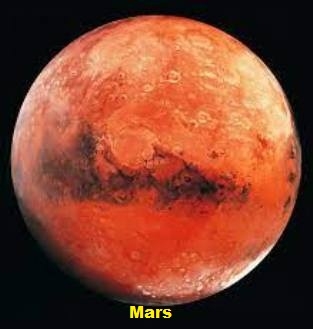
Once every so often while gazing up on a clear night, you may be able to spot a small reddish disc shining in the sky. Meet Mars, a planet that has been inspiring our imagination since time immemorial!
Bigger than Mercury, but smaller than Venus, Mars is the second-smallest planet in our solar system. Distance-wise, it is the fourth planet from the Sun, and our closest neighbour right after Venus. This is a reason why, when Mars comes closest to the Earth, it is one of the brightest natural objects in the night sky, next only to Venus and the Moon. Even with the naked eye, it can be easily distinguished from other astronomical bodies thanks to its unique reddish appearance. This colour is the result of the abundance of rusty-red iron oxides on its surface.
It is not just the colour that has fascinated us over the centuries, but also the idea of life on this “Red Planet” Scientists have long debated whether Mars was once a living planet, and puzzled over its ability to support life in the present or the near future. This is because, in many ways, Mars is similar to the Earth. It is a terrestrial planet with seasons and weather patterns, and a thin atmosphere. Even though it carries impact craters like those on our Moon, it also has geographical features seen on the Earth, like valleys, volcanoes, canyons, deserts and polar ice caps. Scientists have found on Mars what seem to be evidences of ancient floods. Some Martian hillsides even carry traces of salt water flows.
Picture Credit : Google




